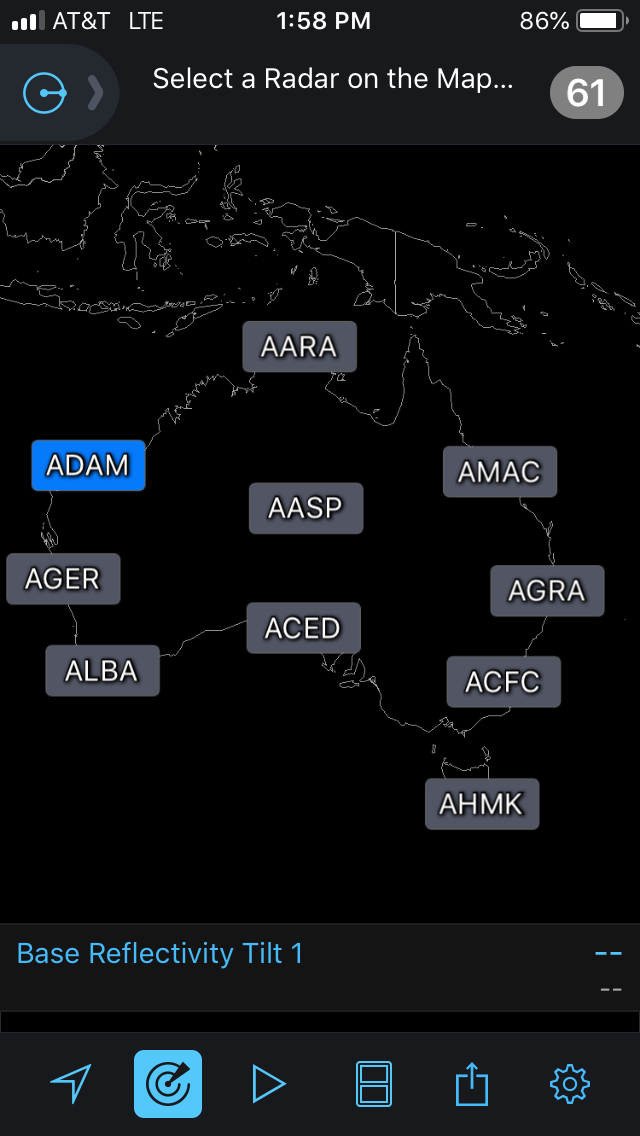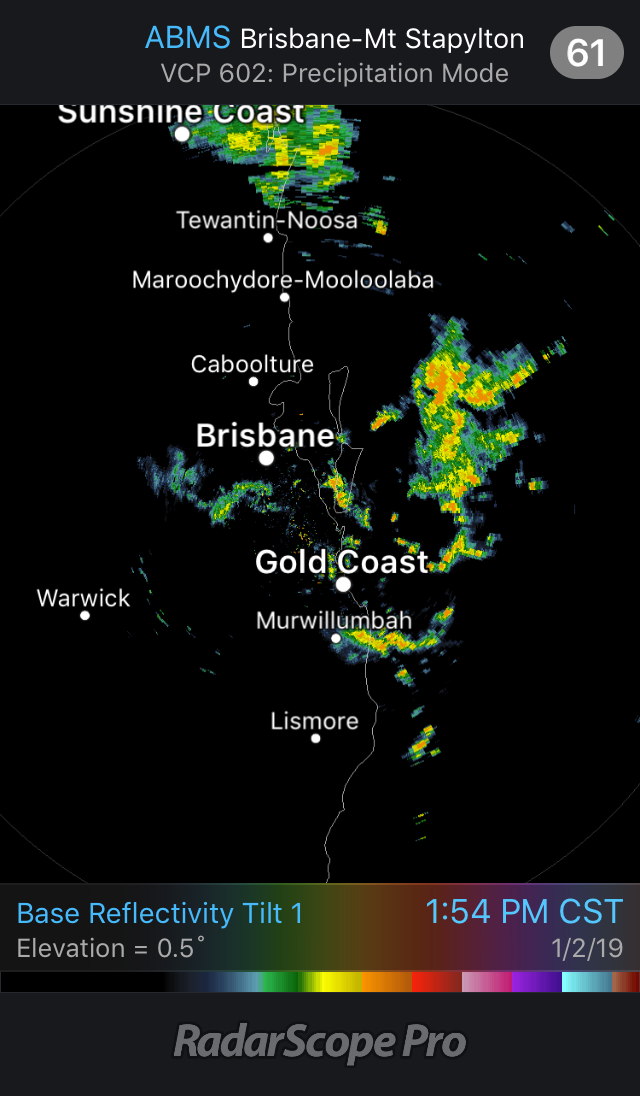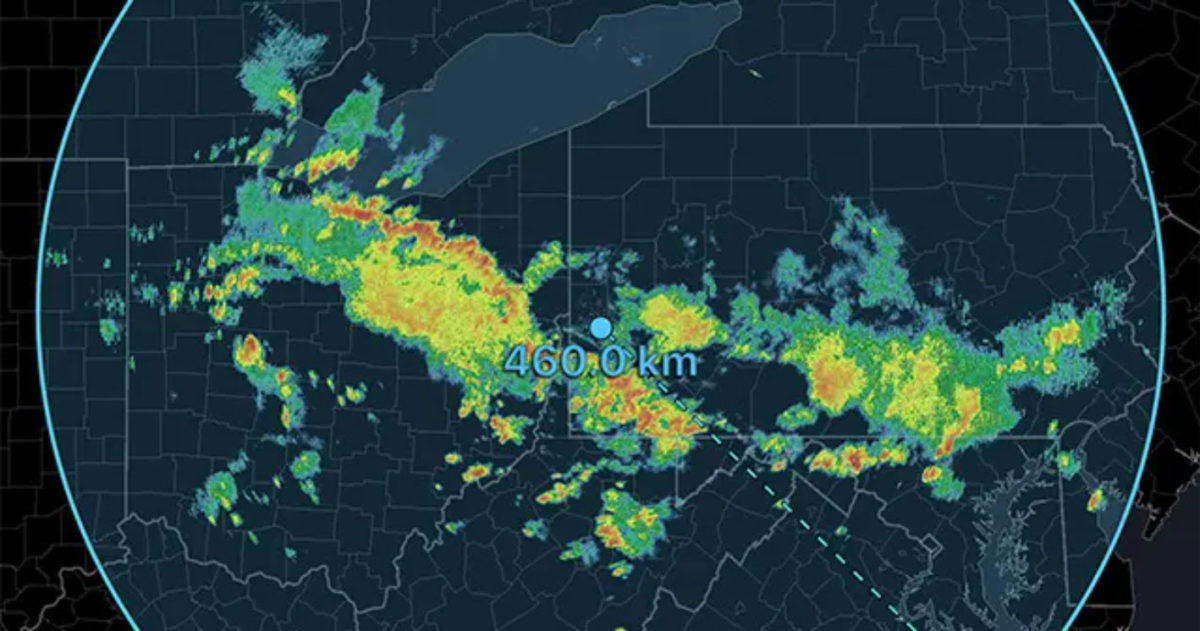RadarScope currently has radar data available in the United States, Canada, South Korea, and Japan. A coming release will add Australia to the mix. Let’s look at some details about the network and the data that they offer.
Australia’s Bureau of Meteorology operates the nation’s network, currently comprised of 60 radar sites. While the network does not entirely cover the continent, radar coverage is primarily focused on major population centers and areas prone to hazardous weather. Also, due to the size of Australia and the low population density, designing a communication network to transmit the data from all of the sites to a central location is difficult. Differences in topography have also presented challenges. Because of these differences, settings for each radar are determined partially by local geography and climate. The radar sites in central and western Australia do not have Doppler capabilities (i.e., they cannot determine velocities).
The radar network is comprised of S-Band and C-Band radars; the primary difference between the two types of radars is the wavelength. The wavelength of an S-Band radar is 10 cm whereas the wavelength of a C-Band radar is 5 cm. S-Band radars are generally preferred in the tropical regions to monitor precipitation at extended ranges because the signal emitted by an S-Band radar does not attenuate (weaken) as much as it goes through heavy precipitation. C-Band radars are generally better suited for smaller ranges. The range of the radar is between 75 and 185 miles, depending on wavelength.
 Australian Radar Sites in RadarScope
Australian Radar Sites in RadarScope
As of late 2017, the network has four radars (in Adelaide, Melbourne, Sydney, and Brisbane) that offer dual polarization data. Each volume scan takes either 6 or 10 minutes to complete, depending on the radar’s mode. Within a single volume scan, 14 elevation scans range from 0.5° to 32°.
 Radar Echoes from Brisbane Radar
Radar Echoes from Brisbane Radar
Not only will it be useful for those in Australia, but it will also provide all RadarScope users with the chance to see tropical storm systems in the southern hemisphere. Look for this release soon!








